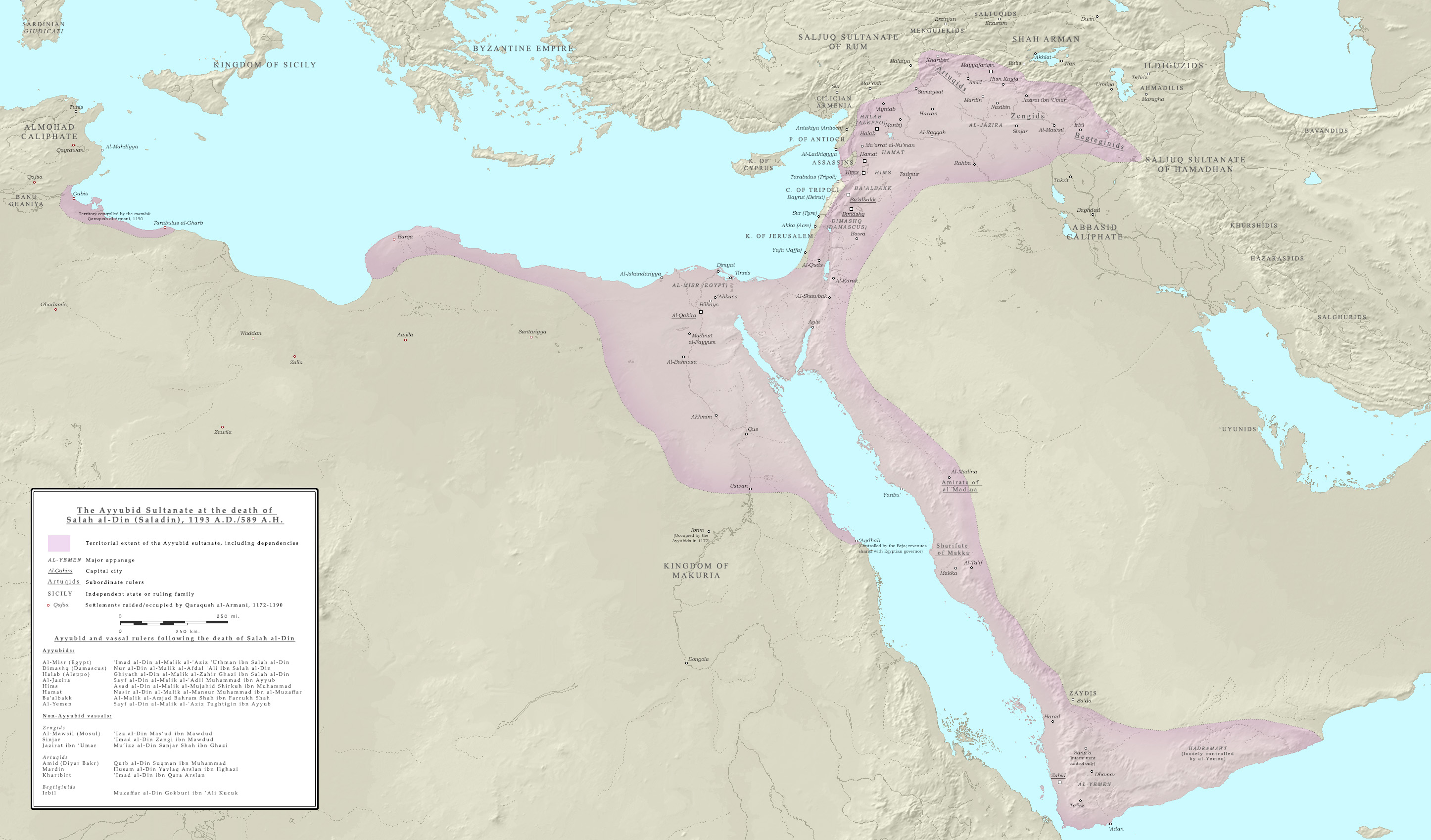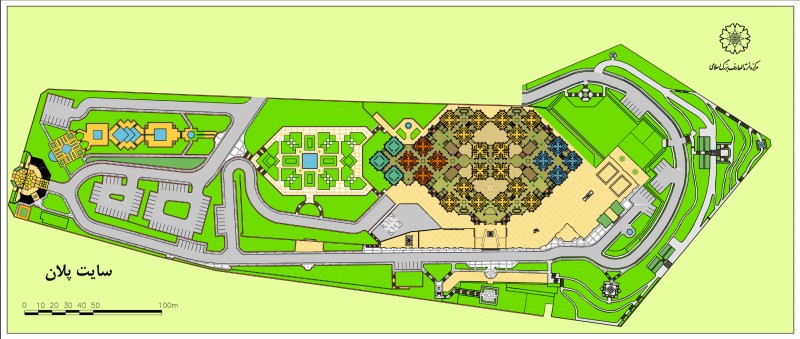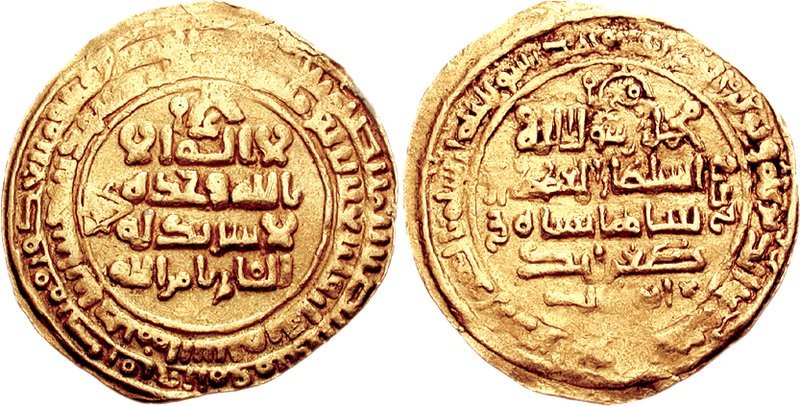|
Hasanwayhid
The Hasanwayhids or Hasanuyids ( Kurdish: حەسنەوییەکان) were a Shia Kurdish dynasty reigning the western parts of Iran such as Iranian Azerbaijan and Zagros Mountains between Shahrizor and Khuzestan from c. 959 to 1015. The last Hasanwayhid ruler died in 1015 in Sarmadj, south of Bisotun, as the Seljuks began entering the region. Aishanid predecessors The Hasanwayhids were preceded in the region by the Aishanid or 'Ishaniya Kurdish tribe. This particular group had ruled territories in the districts of Dinawar, Hamadan and Nahavand. Their emirs Ghanim and Windad (sons of a certain Ahmad) had usurped the rule from the Abbasid caliphate for fifty years, until their death in 960–1. The next generation of Aishanid emirs couldn't keep the control of their family castles: Ghānim’s son Daysam was defeated by the Buyid armies, and Windād’s son ʿAbd al-Wahhāb, was taken prisoner by a rival Kurdish group, and handed to the first Hasanwayhid ruler, Hasanwayh. He was a m ... [...More Info...] [...Related Items...] OR: [Wikipedia] [Google] [Baidu] |
Hasanwayh
Hasanwayh (also spelled Hasanuya), Hasanwayh Al-Kurdi also known as Abu'l-Fawaris, was the Kurdish ruler and founder of the Hasanwayhid dynasty, ruling from 961 to 979. Hasanwayh supported the Buyids against the Samanids which enabled him in gaining some power. He would ultimately control much of Lorestan, Dinavar, Nahavand, Daquq, Shahrazur and Hamadan and was powerful to such degree in which the Buyids refrained from disturbing him. The influence of Hasanwayh reached Azerbaijan. Biography Hasanwayh was the son of a certain Husayn and was from the Kurdish tribe of Barzikani. By 961, Hasanwayh managed to capture several fortresses, thus starting the Hasanwayhid dynasty. He managed to successfully resist Sahlan ibn Musafir, the Buyid governor of Hamadan, and the Buyid ''vizier'', Abu 'l-Fadl ibn al-'Amid. In 970 he reached a compromise with Abu 'l-Fadl's successor which guaranteed his autonomy in return for a tribute of 50,000 dinars. On September 16, 976, Rukn al-Dawla, ... [...More Info...] [...Related Items...] OR: [Wikipedia] [Google] [Baidu] |
Badr Ibn Hasanwayh
Badr ibn Hasanwayh was the second ruler of the Hasanwayhids from 979 to 1014. He was the son and successor of Hasanwayh (). Biography During the civil war between the two Buyid brothers Adud al-Dawla () and Izz al-Dawla (), Hasanwayh had supported the latter. Following the death of Hasanwayh in 979, Adud al-Dawla invaded his territories, executed some of his sons, and installed Badr on the Hasanwayhid throne as his deputy over the neighbouring Kurdish territories. Following the death of Adud al-Dawla in 983, Badr showed his gratitude to him by having twenty men sent to on an annual pilgrimage to Mecca in the name of Adud al-Dawla (as well as Badr's parents). Like Adud al-Dawla, historians portray Badr as the ideal ruler, especially in protecting the settled farmers from his own nomad supporters. Unlike his father, Badr attended many Buyid court meetings. Following the death of the Buyid ruler Fakhr al-Dawla (), Badr went to Ray to help Majd al-Dawla () administer the local a ... [...More Info...] [...Related Items...] OR: [Wikipedia] [Google] [Baidu] |
Annazids
The Annazids or Banu Annaz, Ayyarids, Banu Ayyar (990/991–late 12th century) was a Kurdish Sunni Muslim dynasty which ruled an oscillating territory on the present-day frontier between Iran and Iraq for about 130 years. The Annazids were related by marriage to the Hasanwayhids who they were in fierce rivalry with. The legitimacy of the Annazid rulers stemmed from the Buyid amir Bahāʾ al-Dawla and the dynasty relied on the Shadhanjan Kurds. Although Annazid authority declined in several generations, the dynasty did not disappear. In late 12th century, Surkhab III ibn Annaz was a ruler of Luristan. Etymology Ali ibn al-Athir stated that the name ʿAnnāz derived from the word ''ʿanz'' meaning 'she goat' and signifies the owner, merchant, or shepherd of goats. However, Sharafkhan Bidlisi and Hamdallah Mustawfi put forward the name ''Banū ʿAyyār'' arguing that the Arabic word ''ayyār'' meaning 'smart' or 'shrewd' was also common in Kurdish and Persian and was used ... [...More Info...] [...Related Items...] OR: [Wikipedia] [Google] [Baidu] |
Lorestan Province
Lorestan province () is one of the 31 provinces of Iran. Its capital is the city of Khorramabad. Lorestan is in the western part of the country in the Zagros Mountains and covers an area of 28,392 km2. In 2014 it was placed in Region 4. Lorestan is located close to the border with Iraq. Situated in a scenic valley surrounded by mountains, Lorestan lies approximately 100 kilometers (about 62 miles) east of the Iraqi border. Etymology The name ''Lorestan'' means "land of the Lurs." History The ancient history of Lorestan is closely intertwined with the rest of the Ancient Near East. In the 3rd and 4th millennium BC, migrant tribes settled down in the mountainous area of the Zagros Mountains. The Kassites, an ancient people who spoke neither an Indo-European nor a Semitic language, originated in Lorestān. They would control Babylonia after the fall of the Old Babylonian Empire ca. 1531 BC and until ca. 1155 BC. Parts of Luristan were invaded and settled by the ... [...More Info...] [...Related Items...] OR: [Wikipedia] [Google] [Baidu] |
Kurds
Kurds (), or the Kurdish people, are an Iranian peoples, Iranic ethnic group from West Asia. They are indigenous to Kurdistan, which is a geographic region spanning southeastern Turkey, northwestern Iran, northern Iraq, and northeastern Syria. Consisting of 30–45 million people, the global Kurdish population is largely concentrated in Kurdistan, but significant communities of the Kurdish diaspora exist in parts of West Asia beyond Kurdistan and in parts of Europe, most notably including: Turkey's Central Anatolian Kurds, as well as Kurds in Istanbul, Istanbul Kurds; Iran's Khorasani Kurds; the Caucasian Kurds, primarily in Kurds in Azerbaijan, Azerbaijan and Kurds in Armenia, Armenia; and the Kurdish populations in various European countries, namely Kurds in Germany, Germany, Kurds in France, France, Kurds in Sweden, Sweden, and the Kurds in the Netherlands, Netherlands. The Kurdish language, Kurdish languages and the Zaza–Gorani languages, both of which belong to the Wes ... [...More Info...] [...Related Items...] OR: [Wikipedia] [Google] [Baidu] |
Dinavar
Dinavar (also spelled Dinawar and Daynavar; ) was a major town between the 7th and 10th centuries, located to the northeast of Kermanshah in western Iran. The ruins of the town is now located near Shir Khan, in Dinavar District, Sahneh County, Kermanshah Province. The people of this city speak Laki. History Located in the centre of the ancient region of Media, Dinavar is first attested in history as a town founded by the Greek Seleucid Empire (312 BC–63 BC), but it may have been older. Like the neighbouring town of Kangavar, Dinavar also hosted a Greek population. Under the Sasanian Empire (AD 224–651), Dinavar served as an important fortified place, and was reportedly attacked by the Khazars in the early 6th-century. In 642, following the defeat of the Sasanians against the Arabs at the Battle of Nahavand, Dinavar was conquered. During the reign of the Umayyad caliph Mu'awiya I (), the town was renamed Mah al-Kufa and made one of the two districts of Jibal (Media). Dinav ... [...More Info...] [...Related Items...] OR: [Wikipedia] [Google] [Baidu] |
Buyid Dynasty
The Buyid dynasty or Buyid Empire was a Zaydi and later Twelver Shi'a dynasty of Daylamite origin. Founded by Imad al-Dawla, they mainly ruled over central and southern Iran and Iraq from 934 to 1062. Coupled with the rise of other Iranian dynasties in the region, the approximate century of Buyid rule represents the period in Iranian history sometimes called the Iranian Intermezzo. The Buyid dynasty was founded by Ali ibn Buya, who in 934 conquered Fars and made Shiraz his capital. He received the ''laqab'' or honorific title of ''Imad al-Dawla'' (). His younger brother, Hasan ibn Buya () conquered parts of Jibal in the late 930s, and by 943 managed to capture Ray, which he made his capital. Hasan was given the ''laqab'' of ''Rukn al-Dawla'' (). In 945, the youngest brother, Ahmad ibn Buya, conquered Iraq and made Baghdad his capital. He was given the laqab Mu'izz al-Dawla. As Iranians of Daylamite provenance, the Buyids consciously revived symbols and practices of the Sa ... [...More Info...] [...Related Items...] OR: [Wikipedia] [Google] [Baidu] |
List Of Kurdish Dynasties And Countries
This article is a list of Kurdish dynasties, countries, and autonomous territories. The Kurds are an Iranian people without their own nation state; they inhabit a geo-cultural region known as "Kurdistan", which lies in east Turkey, north Syria, north Iraq, and west Iran. (For more information see Origin of the Kurds.) 8th–19th century states Prior to the Ayyubid dynasty (until 1171) * Hadhbanis (906–1144) * Principality of Shaykhan (906-1832) * Aishanids (912–961) * Daysam's Adharbayjan (938–955) * Shaddadids (951–1199)Amir Hassanpour, ''Nationalism and Language in Kurdistan, 1918–1985'', Mellen Research University Press, 1992p. 50./ref> * Rawwadids (955–1071) * Hasanwayhids (959–1014) * Marwanids (983–1096) * Annazids (990/91–1117) * Shabankara (11th century–12th century) * Principality of Eğil (1049–1864) * Atabegete of Greater Lorestan (1115–1425) * Zakarids (1161–1360) * Ayyubid dynasty (1171–1341) After the Ayyubid dynast ... [...More Info...] [...Related Items...] OR: [Wikipedia] [Google] [Baidu] |
Emirate Of Bradost
Emirate of Bradost or Emirate of Biradost (, 1510–1609) was a hereditary Kurdish emirate, ruling roughly the area from Rawandiz to Targavar and Margavar south of Urmia at its height. The emirate was founded in 1510 and acted as a bufferzone between the Ottoman Empire and Safavid Iran throughout the 16th century. The emirate ultimately succumbed to the expansionist ambitions of the Ottomans and Safavids in Kurdistan. The Biradost dynasty claimed descent from the Hasanwayhids. Geography and history Biradost has been described as "a central upland consisting of valleys and partial basins surrounded by border ranges". In the 16th century, the emirate ruled Targavar, Margavar, Dul, Somay, and western Urmia. The emirate ascended from the chaos and political weakness of the Ottomans and Safavids where various Kurdish emirates came to existence. The founder of the emirate was Yusuf Beg who received the title Gazi Qiran by Ismail I in 1510 as he was given Somay, Targavar and ... [...More Info...] [...Related Items...] OR: [Wikipedia] [Google] [Baidu] |
Center For The Great Islamic Encyclopedia
The Center for the Great Islamic Encyclopedia (Center for Iranian and Islamic Studies) (CGIE) is an Iranian research institute with the task of researching and publishing general and topical encyclopedias about Culture of Iran, Iranian and Islamic culture. The building was nominated for the Aga Khan Award for Architecture in 2001. History The institute was founded in 1983 by Kazem Mousavi-Bojnourdi and is located in Darabad, Tehran. Mousavi-Bojnourdi explained his motivation for founding a scientific centre on these research topics as follows:„ The field of human civilization and culture is so vast that many of its angles have still remained undiscovered. The growth of science and knowledge in the Islamic world and other communities has created the need to gather collections containing information regarding the current knowledge as well as the definitions and jargon used in that particular field of knowledge. This need has moved some scholars to author various series of books ... [...More Info...] [...Related Items...] OR: [Wikipedia] [Google] [Baidu] |
Sarmaj Castle
Sarmaj castle () is a historical castle located in Harsin County in Kermanshah Province, The longevity of this fortress dates back to the Sasanian Empire The Sasanian Empire (), officially Eranshahr ( , "Empire of the Iranian peoples, Iranians"), was an List of monarchs of Iran, Iranian empire that was founded and ruled by the House of Sasan from 224 to 651. Enduring for over four centuries, th .... References {{coord missing, Iran Castles in Iran Sasanian castles ... [...More Info...] [...Related Items...] OR: [Wikipedia] [Google] [Baidu] |
Tughril
Abu Talib Muhammad Tughril ibn Mika'il (), better known as Tughril (; also spelled Toghril / Tughrul), was a Turkoman"The defeat in August 1071 of the Byzantine emperor Romanos Diogenes by the Turkomans at the battle of Malazgirt (Manzikert) is taken as a turning point in the history of Anatolia and the Byzantine Empire. chieftain, who founded the Seljuk Empire, ruling from 1037 to 1063. Tughril united many Turkoman warriors of the Central Asian steppes into a confederacy of tribes and led them in conquest of Khorasan and eastern Persia. He would later establish the Seljuk Sultanate after conquering Persia and taking the Abbasid capital of Baghdad from the Buyids in 1055. Tughril relegated the Abbasid Caliphs to state figureheads and took command of the caliphate's armies in military offensives against the Byzantine Empire and the Fatimids in an effort to expand his empire's borders and unite the Islamic world. Before the advent of the Seljuks, Persia was divided between seve ... [...More Info...] [...Related Items...] OR: [Wikipedia] [Google] [Baidu] |





